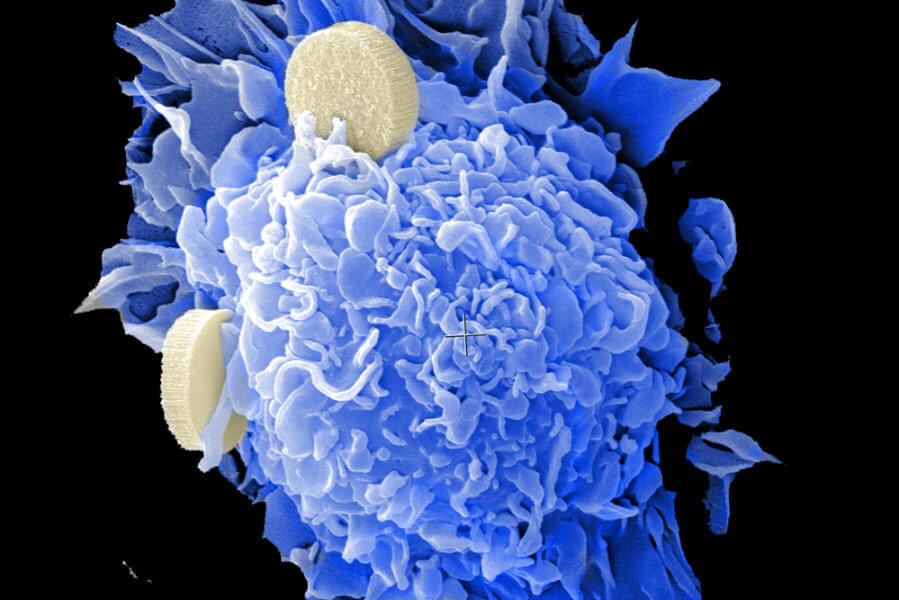Cancer Killing Nanoparticles
Cancer killing nanoparticles are a promising frontier in cancer treatment. These microscopic particles, thousands of times smaller than a width of a human hair, hold immense potential. Researchers are developing them to target cancer cells specifically. Once delivered, nanoparticles can kill cancer cells in various ways, including delivering potent drugs directly, generating heat to destroy them, or disrupting their growth process. This targeted approach offers hope for minimizing harm to healthy tissues, a major drawback of traditional therapies like radiation and chemotherapy. While still under development, cancer-killing nanoparticles represent a fascinating and rapidly evolving area of research with the potential to revolutionize cancer treatment.
In the fight against cancer, researchers are wielding a powerful new weapon: cancer-killing nanoparticles. These microscopic warriors, thousands of times smaller than a human hair, offer a revolutionary approach to treatment. Unlike traditional therapies like radiation and chemotherapy that can harm healthy cells alongside cancerous ones, nanoparticles can be designed to target tumors with pinpoint accuracy. This targeted approach works by attaching specific molecules to the surface of the nanoparticles that bind to receptors only found on cancer cells. Once delivered via injection or other methods, the nanoparticles can unleash their anti-cancer arsenal in several ways. They can act as tiny Trojan horses, delivering potent chemotherapy drugs directly to the tumor, maximizing their effect and minimizing side effects on healthy tissues. Alternatively, they can be designed to generate heat when exposed to light or radiation, effectively cooking the cancer cells from within. Other nanoparticles disrupt the rapid division that fuels cancer cell growth, essentially starving them to death. This exciting field of research is still under development, but the potential of these tiny titans is undeniable. Early studies have shown promising results, and ongoing research is focused on improving their targeting efficiency, therapeutic payload, and overall safety. Cancer-killing nanoparticles represent a beacon of hope, offering a future where cancer treatment is precise, personalized, and less debilitating for patients.
Building on the strong foundation of targeted delivery and multifunctional capabilities, recent research on cancer-killing nanoparticles delves even deeper. Here are some exciting advancements:
Smart Nanoparticles: Researchers are developing “smart” nanoparticles that can respond to the tumor environment. For instance, some nanoparticles can release their drug cargo only when exposed to a specific pH level found within tumors, further minimizing off-target effects.
Nanozyme Therapy: Inspired by the natural killing mechanisms of white blood cells, scientists are exploring a new avenue – nanozymes. These enzyme-mimicking nanoparticles can target and destroy cancer cells through processes similar to those used by the immune system, offering a more biocompatible approach.
Combination Therapies: Researchers are exploring the potential of combining nanoparticle therapy with other treatment modalities like immunotherapy or radiation. This synergistic approach could improve treatment efficacy and potentially overcome challenges like drug resistance.
Smart Delivery Systems: Researchers are developing even “smarter” nanoparticles. Some can respond to the unique environment within a tumor, like low oxygen levels or high acidity. These stimuli can trigger the release of the drug payload, ensuring maximum impact on cancer cells while minimizing effects on healthy tissues.
Nanozyme Therapy Gains Momentum: Taking inspiration from the immune system’s natural defense mechanisms, nanozyme research is flourishing. These enzyme-mimicking nanoparticles can target and destroy cancer cells through processes similar to those used by white blood cells. This approach offers a potentially more biocompatible strategy with fewer side effects.
Combination Therapy on the Horizon: The future of cancer treatment might involve a well-coordinated attack. Researchers are exploring the potential of combining nanoparticle therapy with other established modalities like immunotherapy or radiation. This synergistic approach could significantly improve treatment efficacy and potentially overcome challenges like drug resistance in cancer cells.
Doxil – A Pioneering Nanoparticle in Cancer Treatment
Doxil, a brand name for liposomal doxorubicin, is a prime example of how cancer-killing nanoparticles are making a difference in patient lives. Doxorubicin is a powerful chemotherapy drug, but it can also cause severe side effects like heart damage. Doxil utilizes nanotechnology to deliver the drug in a smarter way.
Traditional Doxorubicin:
- Freely circulates throughout the body, damaging healthy and cancerous cells alike.
- Can cause severe side effects like hair loss, nausea, and heart damage.
Doxil (Liposomal Doxorubicin):
- Encapsulates doxorubicin in tiny fat-based spheres called liposomes.
- Liposomes act like a Trojan horse, delivering the drug primarily to tumors.
- Blood vessels around tumors are leaky, allowing liposomes to passively accumulate within the tumor site.
- Releases the drug payload directly to cancer cells.
- Reduces the amount of doxorubicin reaching healthy tissues, minimizing side effects.
Clinical Impact:
- Doxil has been approved for treating various cancers, including ovarian, breast, and multiple myeloma.
- Studies have shown Doxil to be as effective as traditional doxorubicin in treating cancer, but with significantly reduced side effects, particularly heart damage.
- This allows for higher doses of the drug to be administered, potentially improving treatment outcomes.
Limitations and Future Directions:
- While Doxil represents a significant advancement, it still relies on passive targeting through leaky tumor blood vessels.
- Researchers are exploring ways to further enhance targeting by attaching specific molecules to the liposomes that bind to receptors on cancer cells.
- Additionally, research is ongoing to develop liposomal formulations for other chemotherapy drugs, potentially expanding the reach of this technology.
The case of Doxil demonstrates the potential of cancer-killing nanoparticles to improve patient outcomes by delivering potent drugs directly to tumors while minimizing side effects. As research continues to refine targeting mechanisms and explore new applications, nanoparticles like Doxil offer a glimpse into a future where cancer treatment is more precise, personalized, and less debilitating for patients. Clinical trials are ongoing to assess the safety and effectiveness of these novel approaches. While there’s still a road ahead, the constant innovation in nanoparticle design and functionality fuels optimism for a future where these tiny warriors become a cornerstone in the fight against cancer.
Source:
- https://www.cancer.gov/news-events/cancer-currents-blog/2020/nanoparticle-trained-immunity-cancer-immunotherapy
- https://www.mdanderson.org/cancerwise/could-gold-nanoparticles-help-treat-cancer.h00-159540534.html
- https://www.bitsathy.ac.in/blogs/cancer-killing-nanoparticles-an-innovative-method-to-identify-and-eliminate-cancer-cells/

